WORDS: ADAM LANDAU | PHOTOS: JAMES CONNOLLY
When the Midlands Air Festival announced the Red Arrows and Typhoon as part of the show’s 2021 line up, a lot of eyebrows probably shot up. Here was a small airshow, with just two previous editions in the books, becoming the first event of the year to announce either of the RAF’s two big crowd-pullers, despite never having attracted any air force participation before. Without doubt, the ambition of this superb little show, nestled within the grounds of the Ragley Hall estate, cannot be faulted.
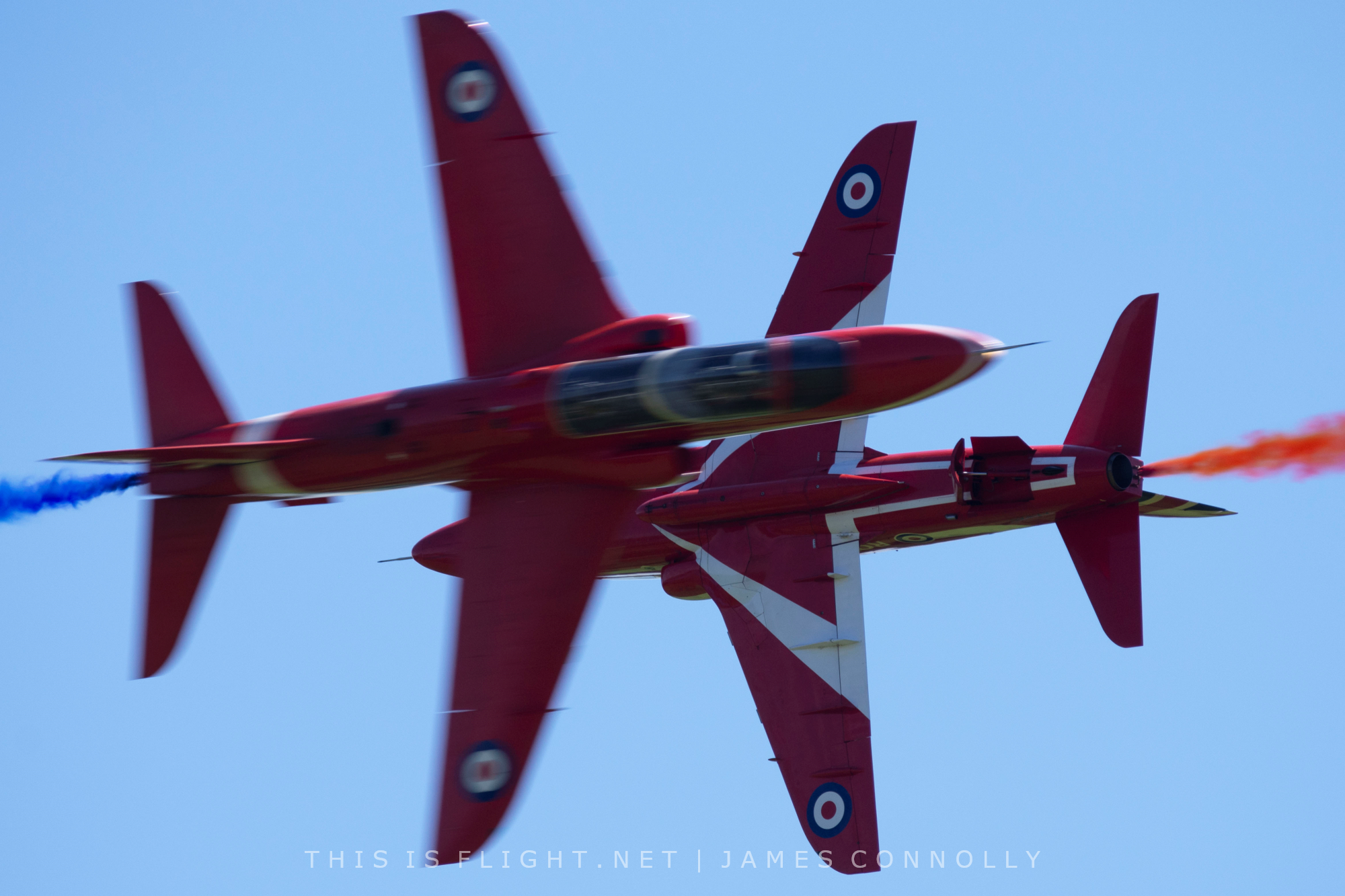
All through the spring, each addition to the ever-growing and wonderfully varied line up made me particularly happy, because having filmed both previous installments of the show unofficially, I had been asked this year to be the show’s videographer. This cannot, therefore, be one of our typical airshow reviews – partly because my experience will have differed from that of the general visitor, and also because of a potential (or percieved) lack of objectivity arising from my deep affection for the event. Think of this more as a plain description than a review – but rest asured that any praise is both genuine and warranted.
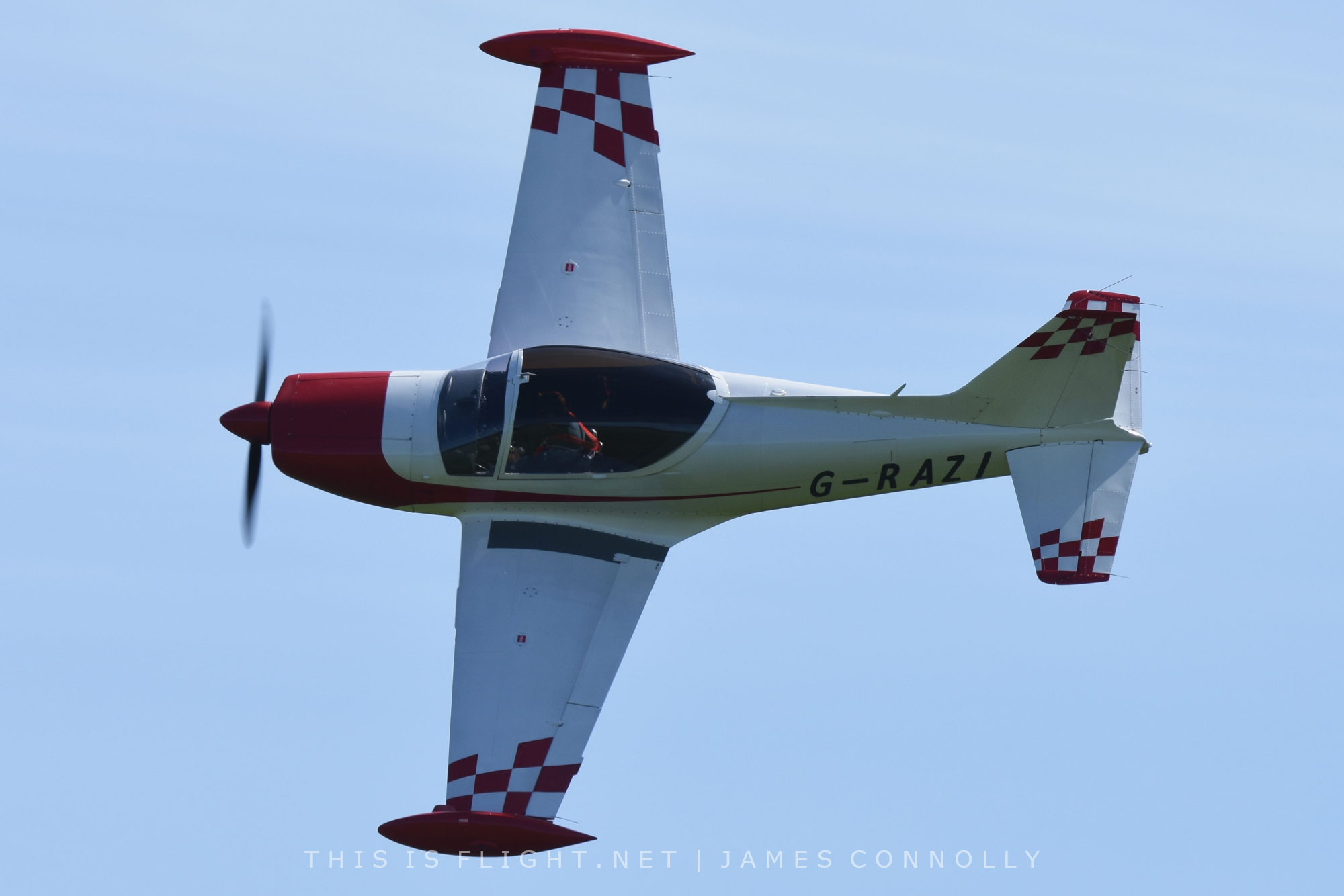
I can’t help feeling that, after drawing modest crowds in 2018 and 2019, the coronavirus pandemic was a bizarrely positive turn of events for the Midlands Air Festival. As, by most measures, the largest British airshow since 2019, the show not only attracted much curiosity on forums and on social media, but also managed to sell out on all three days, attracting its biggest footfall yet. This was good news not just for 2021, but also for the future, because I am certain that many of those first-time visitors will find that the Midlands Air Festival becomes a firm annual fixture on their calendars, just like it has done for me.
To cope with the larger crowd, the showground layout has been changed since the last air display at Ragley three years ago. The crowdline, previously set at the top of the hill near the house, has been moved downhill, closer to the runway. This turned out to be an excellent move, not only bringing spectators closer to the action, but also creating a social-distancing-friendly amphitheatre. With many of the best views coming from further back, there was no need to clamour for a spot on the crowdline fence.
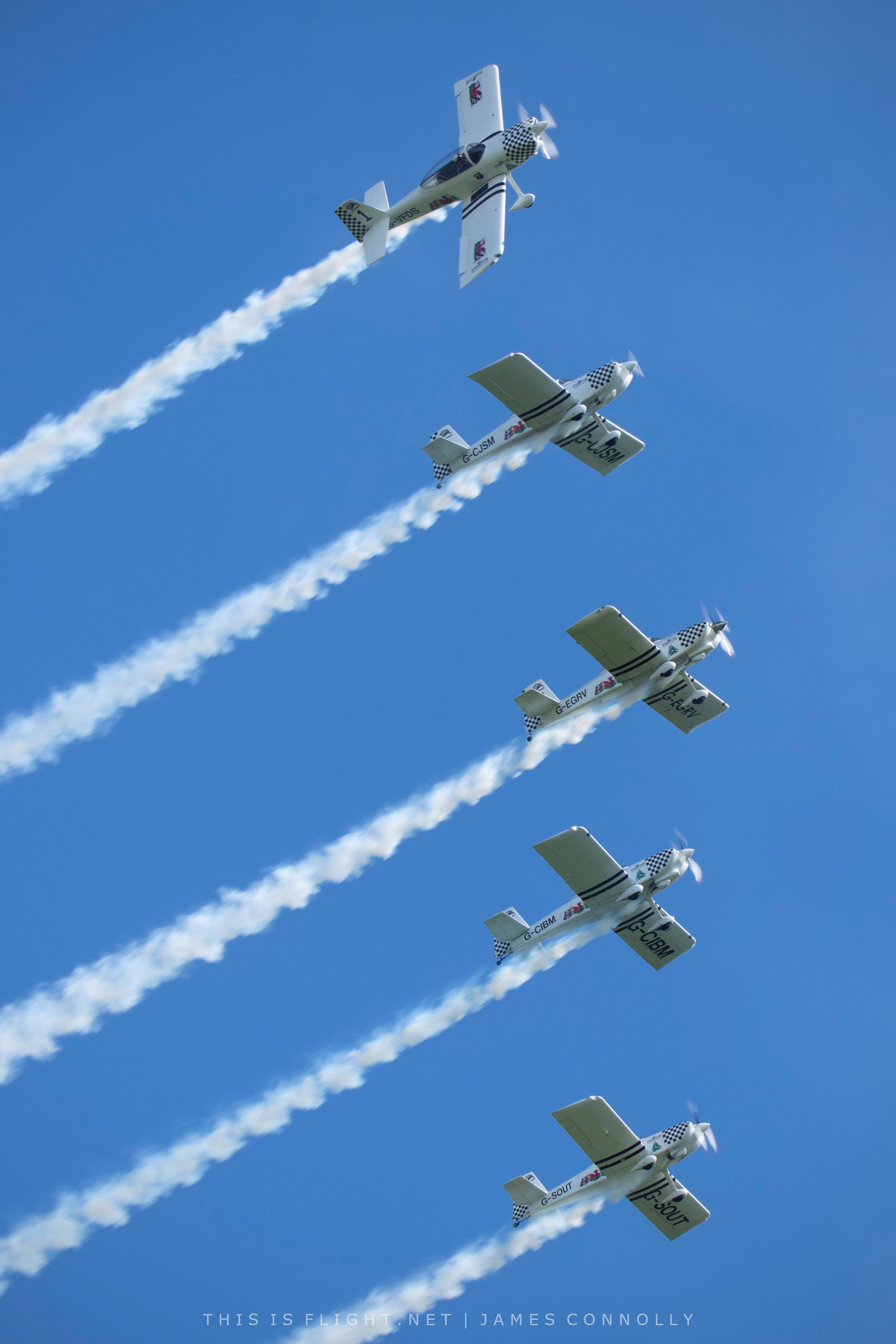
Also helping to disperse the spectators (particularly on the Saturday and Sunday) is the all-day nature of the event. The five-hour afternoon flying display may have been the main attraction for many, but event gates opened at 5am for a mass hot air balloon launch, followed by displays of model aircraft through the morning and further balloon launches at the end of the day, helping to spread arrivals and departures across many hours and avoiding any serious congestion either on the roads or at the entry gate.
The Friday event, which is exclusively an evening affair, was a slightly different story. The later opening time saw me get stuck in almost an hour of traffic jams as the Red Arrows’ slot time approached, but it was well worth it: not only did we see the Reds’ first UK display in almost two years, but also a handful of other airshow performances, a firework display, and a delightfully madcap hot air balloon “nightglow”, with a lineup of balloons flashing their burners in time to music under the darkening sky. It’s a spectacle I had seen once before, at an earlier edition of the same show, and both times I couldn’t help but wear an infections grin.
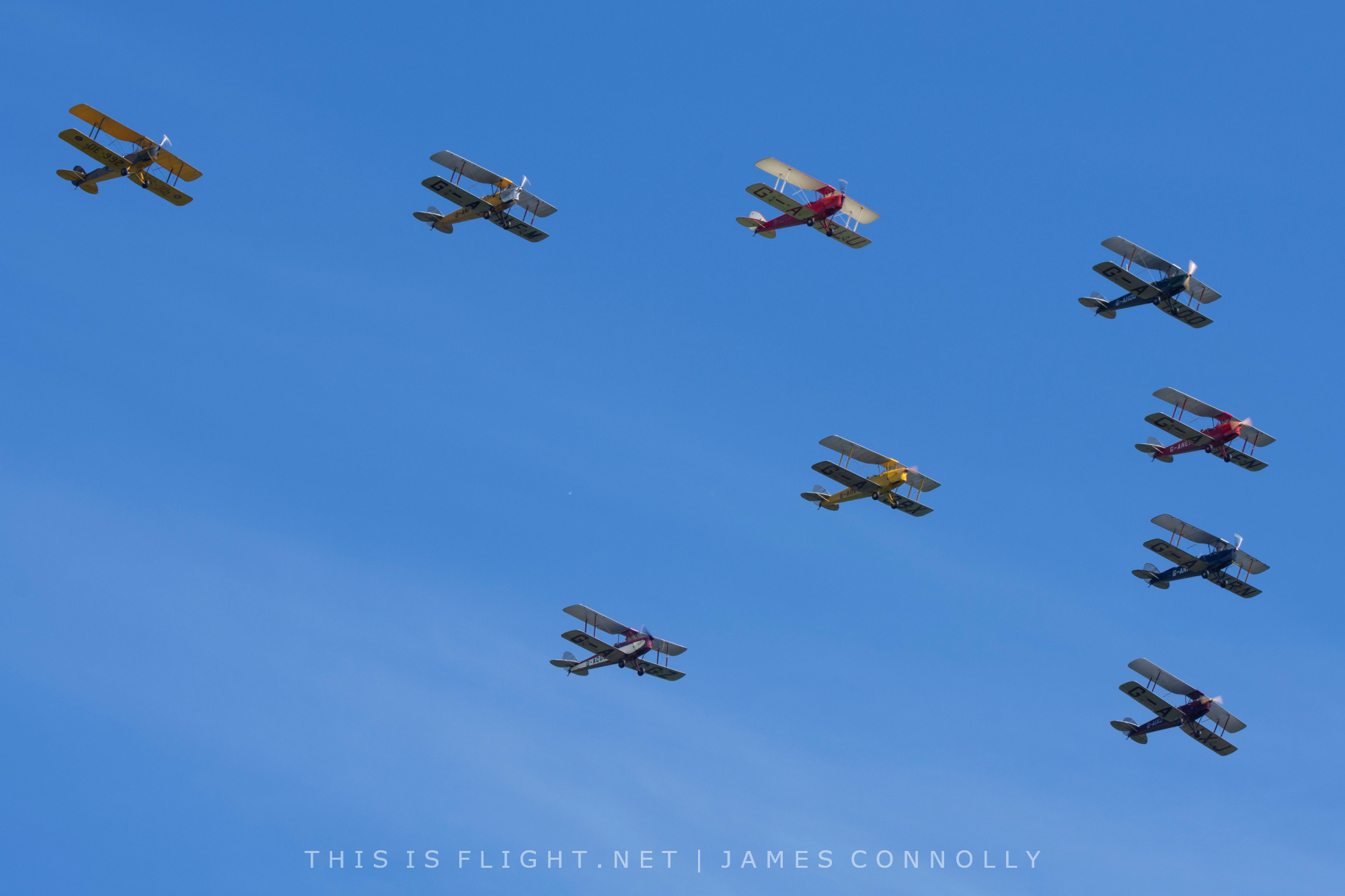
The much-advertised pyrotechnic air displays were, themselves, a little limited, consisting of Tim Dews in his Grob 109b, and Brendan O’Brien in “Otto the Helicopter”. The UK is unfortunately shackled by Civil Aviation Authority rules which ban display flying from taking place more than 30 minutes after sunset, meaning the window in which such displays are both effective and legal is extremely short. Nonetheless, plenty of other shows have crammed in three or even four such acts, so it certainly seems like an area of potential growth in the future.
All three days were blessed with glorious weather; warm without being uncomfortable, and with mainly blue skies. To a point, this forecast had concerned me, as the display site at Ragley is south-facing, but for all my worries of shooting into sun, the light was, in fact, kinder than I remembered. Not only that, but the flying displays as a whole were low, close and intimate to a degree that equalled or surpassed any other UK airshow I’ve been to outside of Shuttleworth, and the rolling hills behind the display area even presented the odd opportunity to get “landlocked” photographs of aircraft flying below the height of the surrounding terrain.
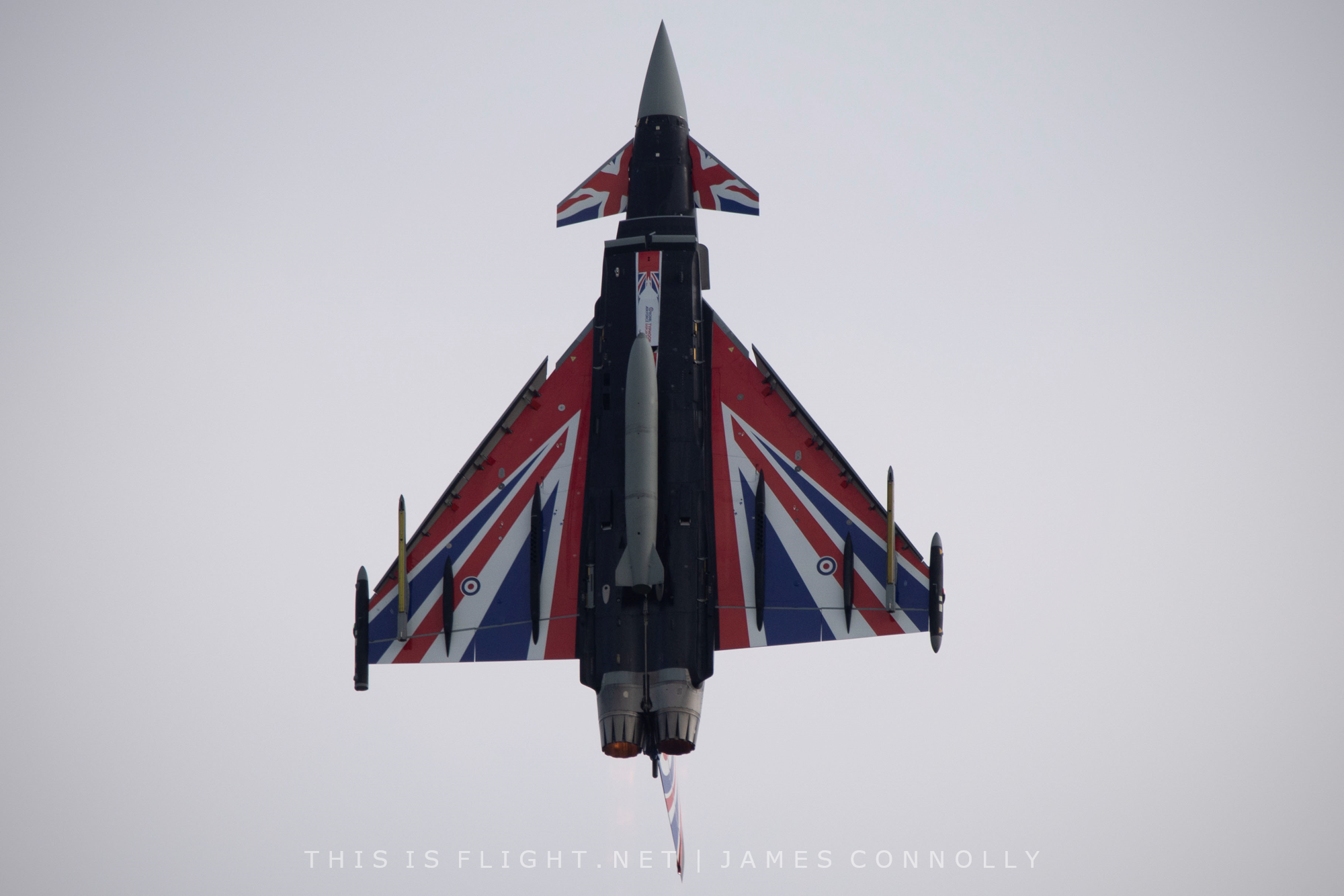
There was further surprisingly good news to report when the Typhoon FGR.4 arrived for its solo display – a tricky-to-film act I had regarded with a certain amount of trepidation. The aircraft was debuting an all-new paint scheme which had seemed, to me, a tacky and low-effort affair, notable for its inconsistancies, imperfections and utter lack of nuance. In the flesh, it was a different matter entirely: those imperfections faded into an irrelevance at 400 miles per hour, and the striking red, white and black stood out strongly against a perfect blue sky. 2021’s display routine proved equally striking, and is probably the team’s strongest offering in five years. After a particularly powerful showing on Sunday, I’m confident in saying that the Typhoon solo display is once again one of Europe’s top fast jet demonstrations – an accolade it probably hasn’t deserved since 2016.
The Falcons, too, provided an enjoyable display, dropping into Ragley Hall from a Short Skyvan to debut their new 60th anniversary display routine. Once again, it was an act I had felt downbeat about prior to the show, having heard that their trademark “Falcons Stack” had been axed, but I was left feeling more than impressed on the day; the team’s new downwards spiral is at least as much of a spectacle, and perhaps even a better one.
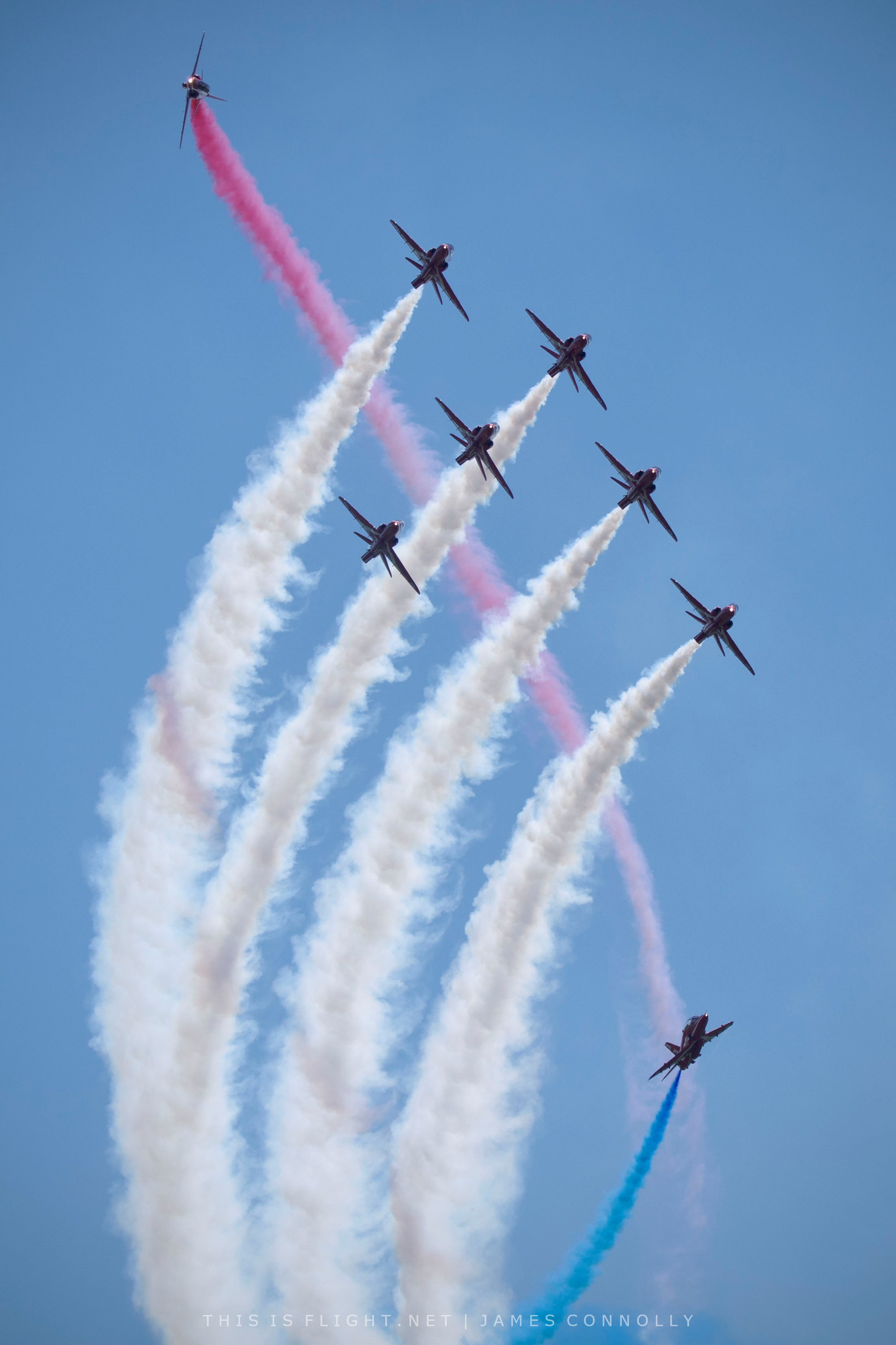
If there were two displays that didn’t quite live up to my expectations (and through no fault of the organisers), they would have to be the other RAF contributions. The Red Arrows, down to eight aircraft due to a fuel leak on Red 5 and a missing spare jet, debuted their new 2021 show, which was no doubt impressive to the untrained eye, but perhaps less so to airshow regulars. Despite much talk of new manoeuvres, there was actually very little that we haven’t seen countless times before (the much-talked-about Boomerang is really just a sequence of two previous moves, for example). At the same time, it felt like quite a lot of old favourites are suddenly missing, and there was, on the whole, less variety in the display than I can remember in any previous year. The Battle of Britain Memorial Flight, with a dreary two-ship Spitfire tailchase that lasted ten minutes yet contained barely a single moment of note, was more disappointing still.
Luckily, things move in a more positive direction with the civilian displays, which were all of an exemplary standard. Particular stand-outs for me were the varied and energetic Team Raven, the delightfully ungainly nine-ship formations of the Tiger 9 Aeronautical Display Team, a flowing aerobatic sequence from Peter Teichman in his newly-restored Russian-schemed Spitfire (a public debut, no less!) and a typically low, aggressive performance by Plane Sailing’s lumbering PBY-5A Catalina.
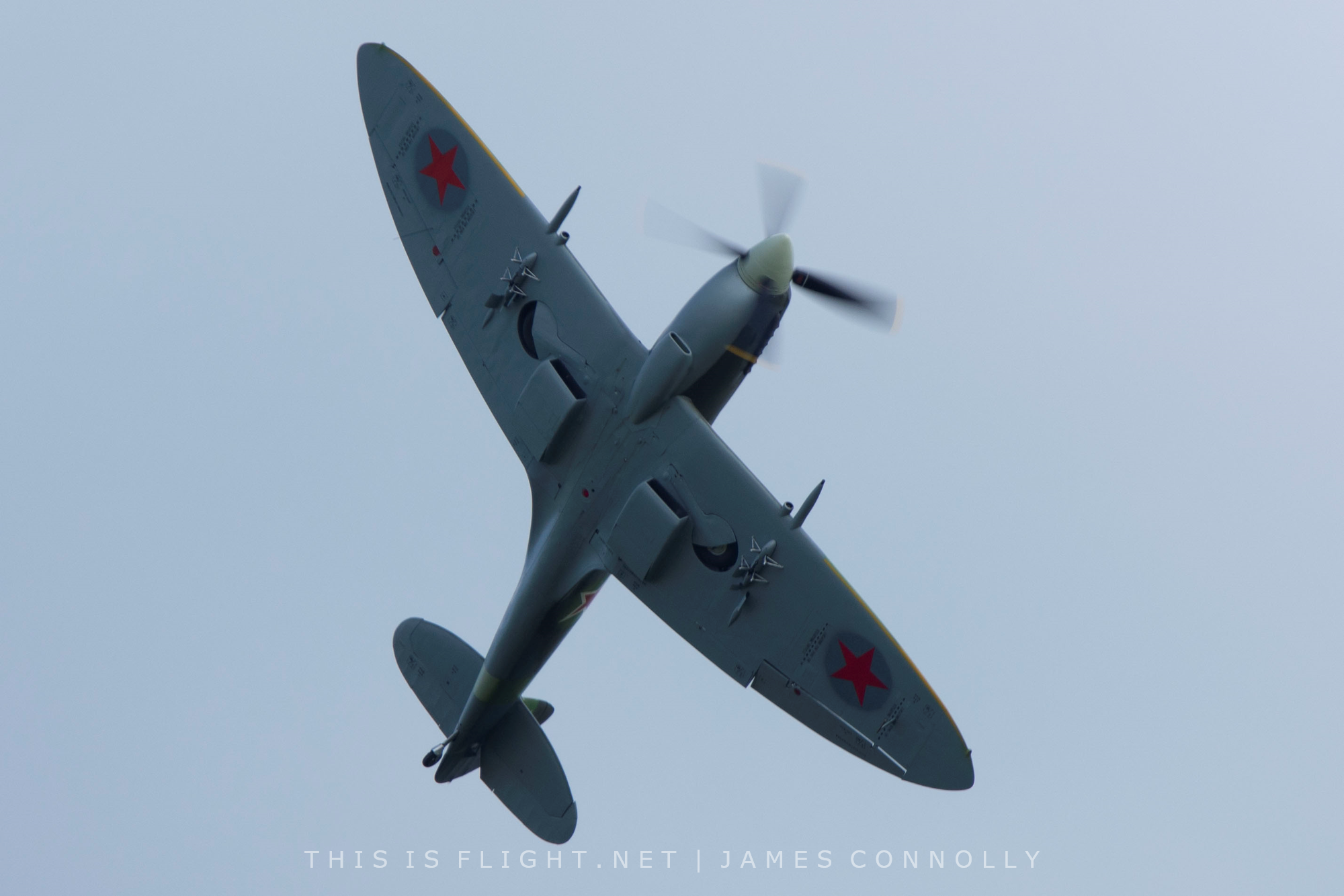
Special mention, too, must go to the Stampe Formation Team, who presented a three-ship display (including a moving missing man formation) after the loss of team pilot Angus Buchanan in a training accident one month earlier, followed by a divine solo aerobatic performance by Chris Jesson in the lead Stampe at the end of the show.
Speaking of solo displays of a lighter persuasion, Paul Freeland did a superb job of showing off the sleek lines of his SIAI-Marchetti F.260, and at the other end of the spectrum, Rich Goodwin’s display in his new, highly-modified Pitts S-2SE was even more stomach-churning than usual.
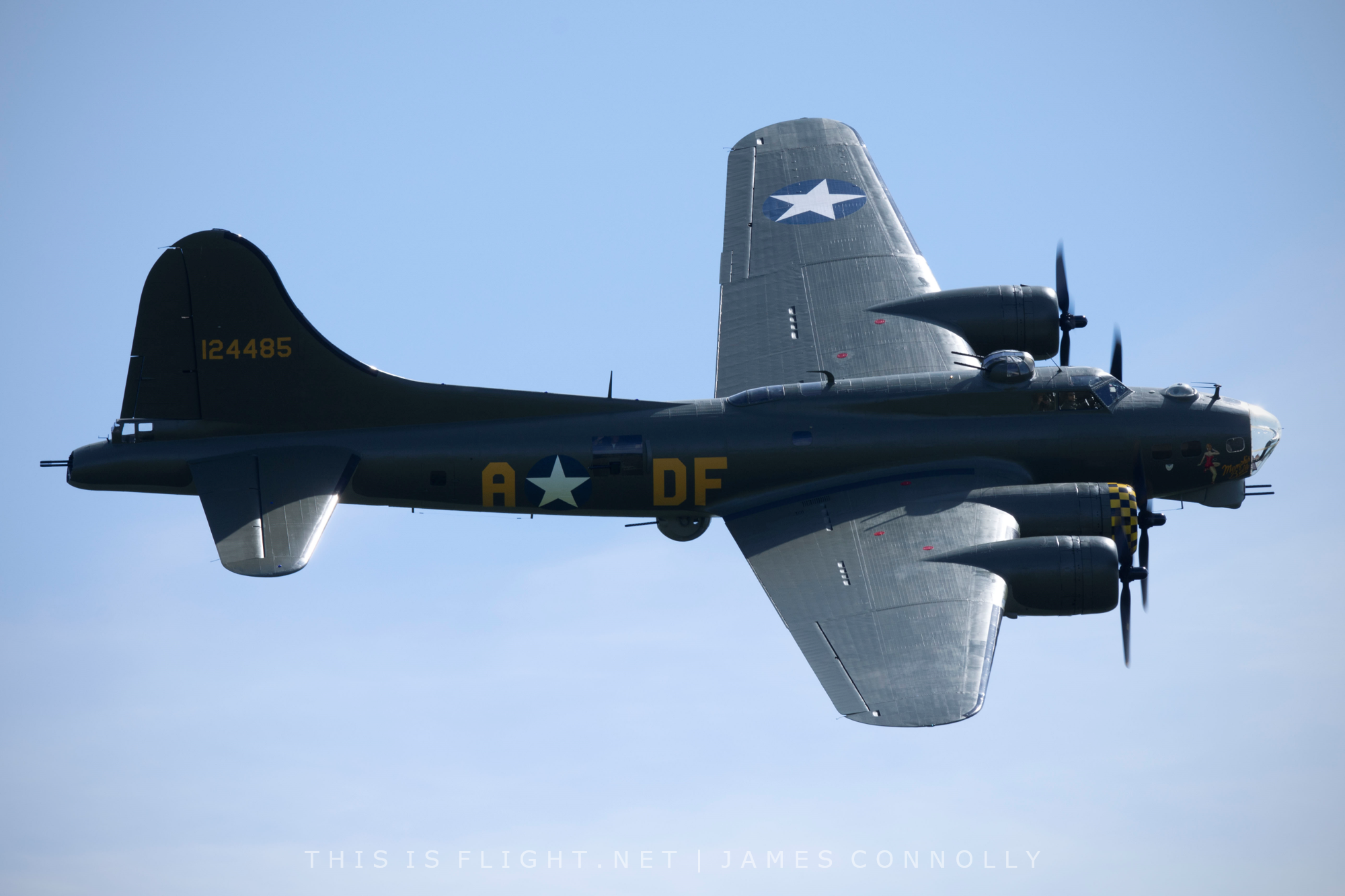
This, already, would make for an excellent airshow, yet the aircraft kept on coming. The Historic Army Aircraft Flight provided a Sioux and Scout pairs display, B-17G Flying Fortress “Sally B” made her first airshow appearance since 2019 (and the first since being repainted), the Turbulent Team did an excellent job of balloon popping, flour bombing and limbo flying, despite slightly bumpy conditions, the Vintage Pair fielded two Chipmunks and the Gipsy pair provided one more, flying in formation with Kevin Hale’s Auster AOP6.
It was, therefore, a line up that featured a little bit of everything, with lighter aircraft operating from a makeshift runway in the grounds of the estate, and others flying in from Bidford, Fairford, East Midlands, Duxford, Coningsby and Coventry. With aircraft of so many persuasions arriving from so many directions, mixing not just with each other, but also having to work around remote control aircraft and hot air balloons on the ground, it is a wonder the show ran to schedule – and yet it did, with no hiccups, no cancellations, and no down time.
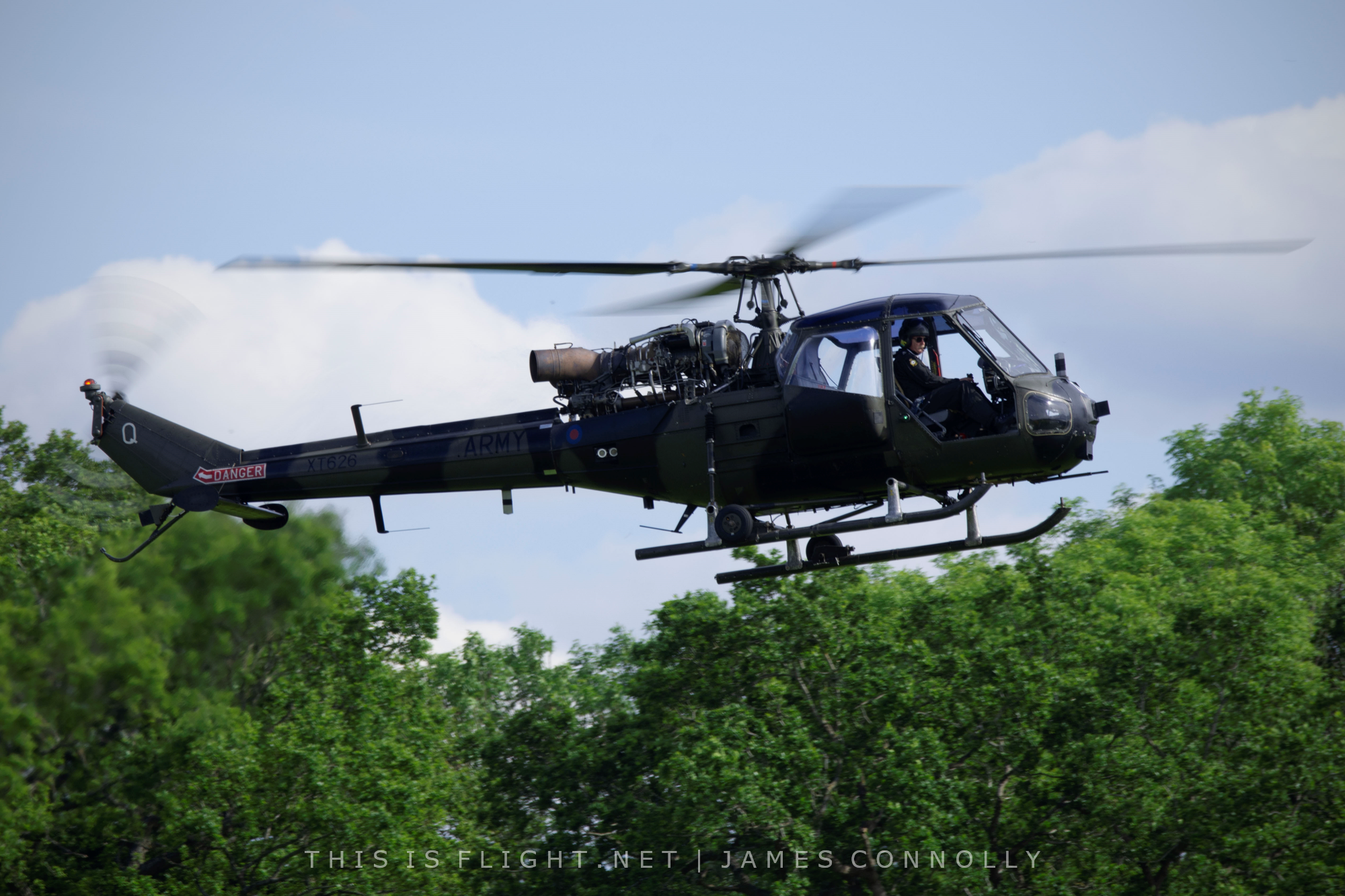
All being said, this year’s superb offering will have put the Midlands Air Festival very firmly on the radar of airshow enthusiasts. And it doesn’t stop there, because, never ones to stand still, the organisers are working towards even bigger and more ambitious goals for 2022.
Three years ago, after the first edition of the Midlands Air Festival, we wrote on this website that it was on track to become one of the country’s best small airshows within the next few years. We were right; this year’s show has solidly attained that accolade, it’s now clear that future editions could be even bigger, and even better, than that.